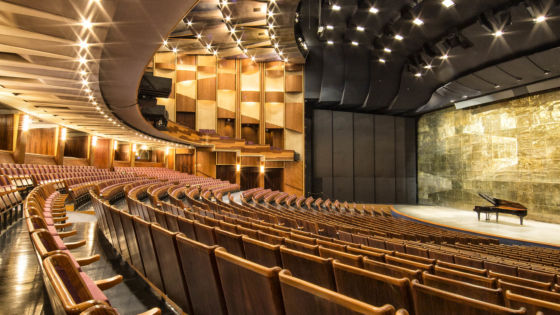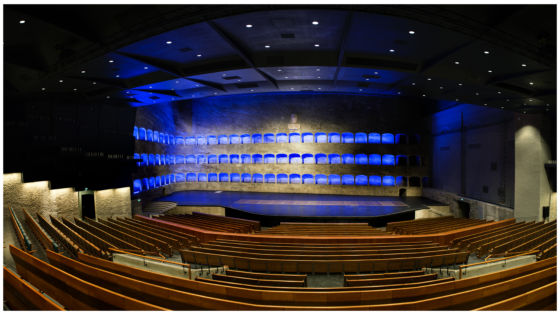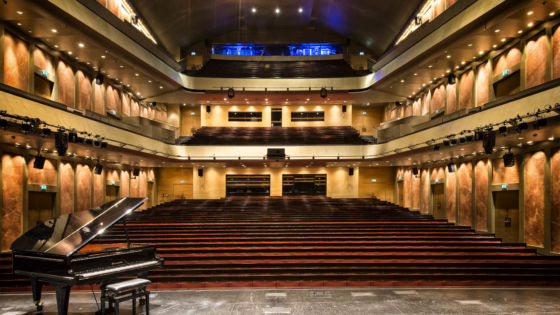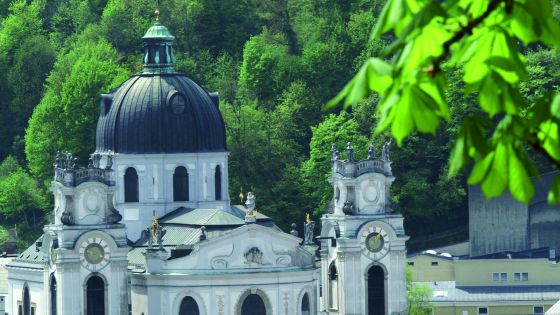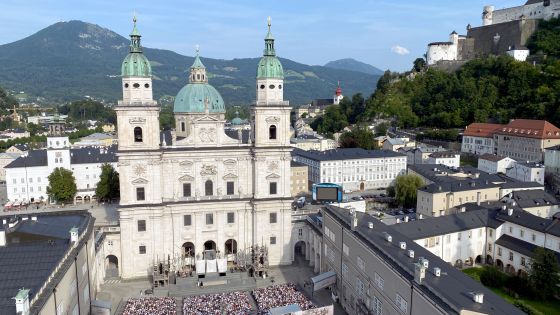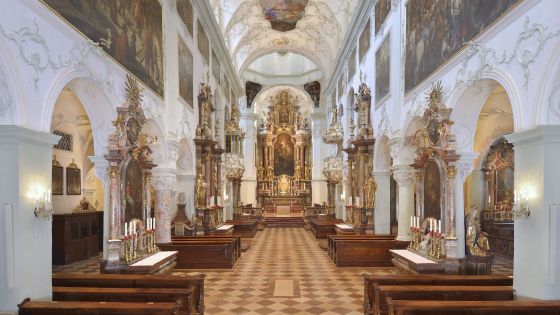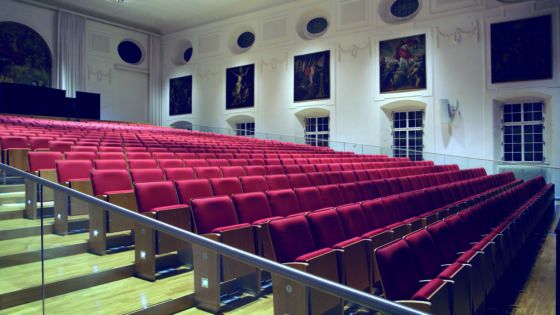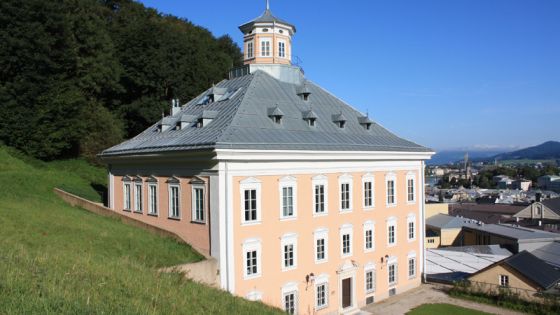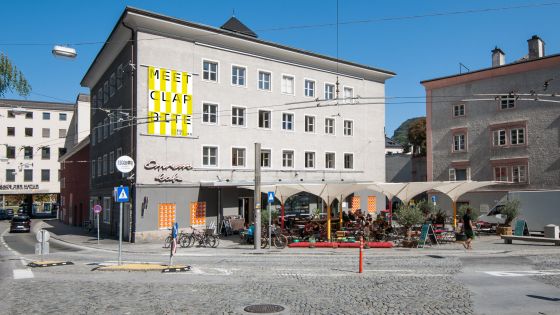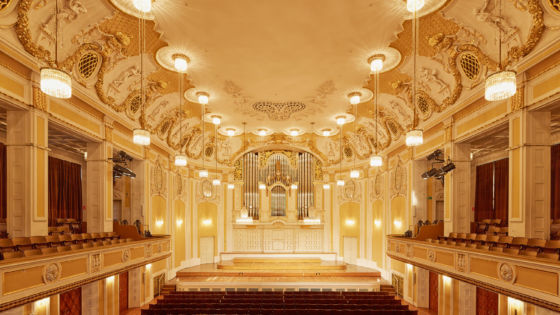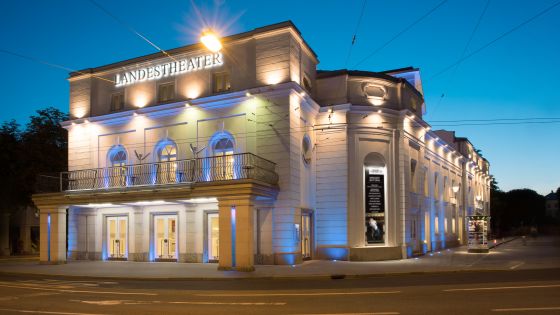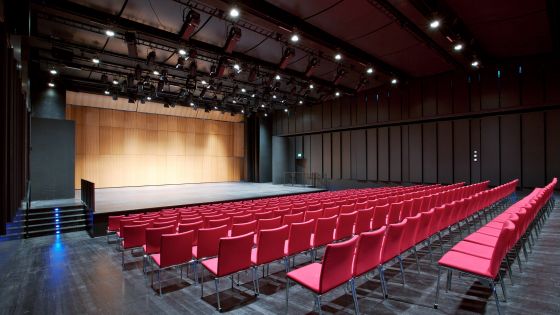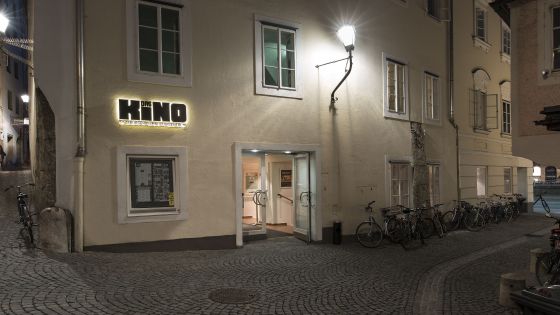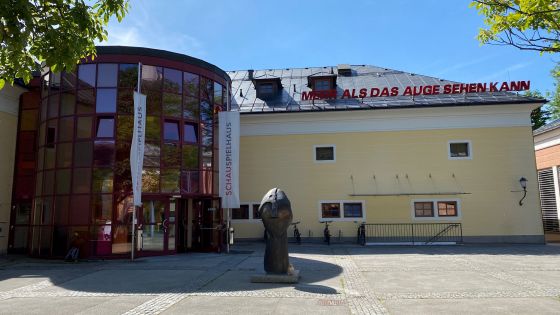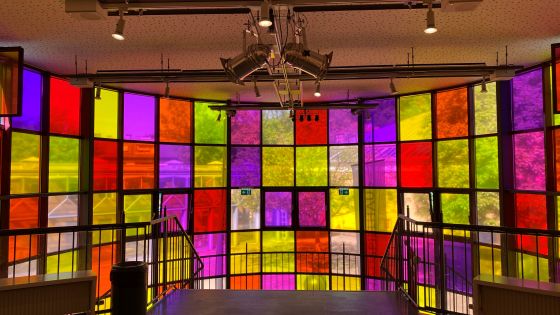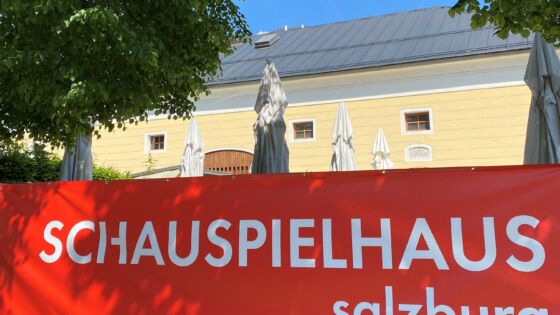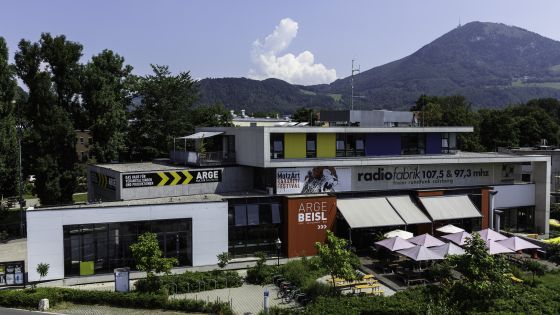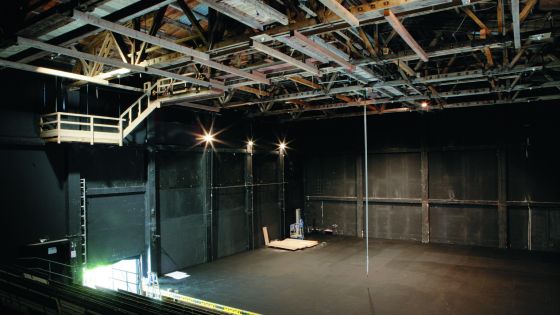Karl-Böhm-Saal
Karl Böhm Saal
he Karl Böhm Hall serves not only as a foyer but also for all sorts of prestigious purposes. It was built in 1662 by Prince-Archbishop Guidobald Graf von Thun (1654–1668) as a winter riding school. It was converted in 1926 by the Salzburg architect Clemens Holzmeister and during the building work the conglomerate rock of the Mönchsberg was revealed at the southern end of the hall. For the fireplace at ground level Holzmeister designed a wrought-iron guard in which the history and purpose of the hall are symbolically depicted by means of the regional coat of arms, a bishop’s mitre, a lyre, horseshoe, treble clef and theatre masks. A Baroque balustrade of stone offers a raised view of the hall, whose ceiling is covered by a 600-square-metre fresco. It is one of the largest of its kind in Austria and shows horsemen attacking “Turkish dolls”, which was part of cavalry training during the 17th century and was known as “Turkish Head Jousting”. The fresco was created in 1690 by the renowned Salzburg court painter Michael Rottmayr and his pupil Christoph Lederwasch; it was renovated in 1926 and – when the roof rafters were renovated – again in 1976.
The walls of the Karl Böhm Hall are panelled with dark wood and several balconies break up the cassette structure. In connection with the major conversion of the Felsenreitschule in 1969/70, Clemens Holzmeister linked the dais with two wooden staircases in the style of the rest of the hall. Further renovation work took place in June 1999: a new parquet floor of light oak and dark wood was laid, the wood panels newly stained and the curtains replaced by light, bright textiles. A new lighting concept creates a brighter atmosphere. Since July 2008 Max Weiler’s huge painting Wie eine Symphonie (Like a Symphony), 1990, an homage to Mozart, graces the Karl Böhm Hall as a permanent loan from the Max Weiler private foundation in Vienna.

